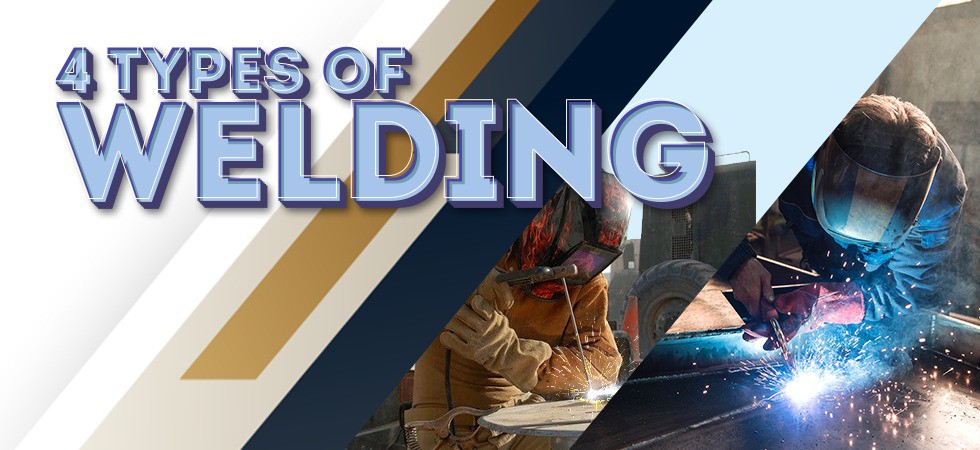
Welding is a crucial part of the shipbuilding business. The better the weld, the better the quality of the vessel. The welding result doesn't exclude the quality of the welders as well. Based on your need, you might want a different welding technique done by qualified welders. There are 4 types of welding starting with MIG (Metal Inert Gas) welding, TIG (Tungsten Inert Gas) welding, Stick welding, and flux core, below is the explanation.
The 4 Types of Welding
1. MIG - Gas Metal Arc Welding (GMAW)
A MIG Welding is one of the most common types of welding usually used in creating homes and buildings. GMAW is using a solid wire electrode that is heated during the process and then applied to the weld pool. In the process, a shielding gas is used alongside the electrode to help protect the weld pool from airborne contaminants. MIG Welding is suitable for both thin sheet and thick section components.
Compare to TIG welding, MIG welding appliances are much faster resulting in shorter lead times and lower production costs. However, MIG welding also has a disadvantage, which it is not suitable to use outside. Since it is using the shielding gas to protect the purity of the weld, an outdoor condition might impact the weld result negatively.
2. TIG - Gas Tungsten Arc Welding (GTAW)
TIG welding is a welding process that uses a non-consumable tungsten electrode to produce the weld. This technique is suitable to weld thin sections such as stainless steel, aluminum, magnesium, nickel alloy, copper alloy, cobalt, and titanium.
Compared to MIG welding, TIG welding produces more precise and cleaner welds thus make it stronger than MIG welding. In fact, TIG welding has the strongest welding result compare to other types/techniques of welding. However, TIG welding is the hardest technique to master as you need to coordinate both of your hands and one of your feet together. One hand holding the torch, another hand holding the filler rod, and one foot controlling the "heat" of the torch. Having these challenges, the quality of TIG welding would fully depend on the welder and the production would also be higher as you need a skillful worker for this job.
3. Stick - Shielded Metal Arc Welding (SMAW)
Stick welding is a welding process that uses consumable protected electrodes (stick) and often used in maintenance or repair work, construction, industrial fabrication, and underwater pipelines. This technique is also suitable to be used outdoor because as the stick melts, the protective cover also melts and shields the weld area from any airborne contaminants.
Stick welding also known as manual metal arc welding (MMA/ MMAW). This technique is one of the world's first and most popular welding techniques. Most of the maintenance and repair industry using SMAW as their welding process and this method continues to be used in welding heavy steel structures and industrial fabrication despite the development of other welding techniques. SMAW can be used to weld steel, iron, stainless steel, aluminum, nickel, and copper alloys.
4. Flux Core - Flux-cored Arc Welding (FCAW)
A Flux core welding process is similar to MIG welding which uses continuous wire and power supply. Even though it is not portable, just like GMAW, FCAW can be used for outdoor welding as the flux shield offers protection to the welding result against weather elements. This method is often used for welding thick metals like in the machining industry. Flux-cored arc welding works well with most carbon steel, cast iron, hard facing/ surfacing alloys, and stainless steel, but it cannot be used to weld nonferrous exotic metals such as aluminum.
Dredgers are important machines used for excavation and land reclamation in water bodies. They come in different shapes, sizes, and types, depending on the specific purpose they are designed for. I....
Pilot boats play a vital role in ensuring the safety and efficiency of maritime transportation. These boats are designed to transport pilots to and from ships that require their expertise in navig....
Self-propelled barges are vessels that are designed to transport large quantities of cargo on inland waterways. These barges are propelled by their own engines, making them highly efficient and cos....
Barge/ Dumb Barge A barge is a flat-bottomed boat that is designed to transport goods or people on inland waterways or near-shore locations. Dumb barges, also known as unpowered barges, are t....